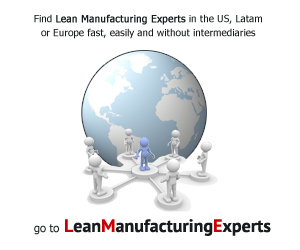Lean Manufacturing And The Myth Of Mr. Scrooge
“Lean” is a very pesky word. I’ve come to suspect that it conjures images of starvation and poverty in people’s minds; which is why at social gatherings, I always wince a bit when someone asks about my business philosophy. I’ve found that as soon as I drop what I’ve come to call “the lean bomb,” things can go one of three ways: (1) The person is familiar with lean practices and we go on to have a stimulating conversation about great business, (2) the person is intrigued and wants to learn more or (3) the person walks away with visions of an overworked army of Bob Cratchits freezing to death in my cold dark factory.
Unfortunately, due to lack of understanding regarding the lean approach, I often see scenario number three. And this is a terrible shame for the companies out there who could actually be providing better conditions for their employees if they only understood what lean manufacturing is really all about. Because it would probably be difficult to get everyone on board with a campaign to change the term “lean manufacturing” to something like “well-thought-out manufacturing,” the next best thing is to promote awareness of what lean really means. So here it goes.
What Lean Doesn’t Mean
Lean doesn’t mean mass layoffs. Thanks to the corporate downsizing trend of the 1990s and early 2000s, this is probably the most pervasive and damaging of the lean myths. In reality, lean has nothing to do with downsizing. Rather, continuous improvement — one of the foundations of the lean approach — absolutely depends on employee input and insight for the purpose of retention. The continuous improvement plan is built on and around those unique insights, making the individuals who provided them a critical component to successful implementation. Lean manufacturing targets efficiency, yes, but that efficiency is based on employees’ expressed needs.
Lean doesn’t mean working people to the bone. This misconception is baffling. Those who ascribe to the lean approach are driven by a desire for greater efficiency — something that overworking already tired employees could never achieve. Lean practices ultimately develop systems, routines and processes that are perfectly orchestrated to make everyone’s jobs easier and more pleasant.
Lean doesn’t mean getting rid of buffers and back stock. In the manufacturing world, this would be a special kind of insanity. No business owner in their right mind would even consider it. If you’re following lean practices, just make sure those buffers are controlled and well-planned to avoid losses.
Lean doesn’t mean being a cheapo. Here’s where the Mr. Scrooge myth really rears its ugly head. Like all wise businesspeople, lean company owners know that to make money, you’ve got to spend it. However, taking the lean approach, you first analyze your company’s processes and practices to identify unique factors that affect the bottom line. Then, you develop a profitability framework of sorts, based on these factors. That way, when you’re faced with a proposed expense, you just check to make sure it fits within that framework. Sometimes the proposal just needs a few tweaks here or there to achieve a good fit. Other times, you realize right away that it would have been a bad move.
What Lean Does Mean
Lean means minimizing waste. And not just because less waste means less spending. You also minimize waste because less waste increases employee morale and provides customers with added value. Or, to put it another way, continuous improvement through lean manufacturing keeps customers satisfied and employees motivated and happy, profitably.
Lean means corporate responsibility. Even the EPA agrees. In a recent article on EPA.gov, they encouraged businesses to adopt the approach, saying, “Through its systematic focus on the elimination of non-value-added activity, lean manufacturing substantially improves the environmental performance of organizations. Reducing common types of manufacturing waste — defects, waiting, overproduction, movement, inventory, complexity and unused creativity — yields a variety of environmental benefits, including less use of energy, water and raw materials; reduced generation of solid and hazardous wastes; and lower emissions of hazardous air pollutants.”
Lean manufacturing is a constant process of analysis. The lean approach doesn’t end with a plan on paper. It’s intended to create a business culture where customer and employee satisfaction are allied to facilitate sustainability. For this culture to thrive, every member of your team must be trained to think lean — to be able to improve processes by identifying and eliminating waste. The end product, over time, is an organization that delivers greater value to customers at lower costs, all the while increasing employee competence and morale.
Sounds like something Mr. Scrooge sure wouldn’t get behind, right? And let me share this with you: If we measure a company’s success by a mix of profitability, growth, innovation, happy customers and proud employees, I can say with confidence that — 15 years into our lean journey at Lyall — the lean approach has been a real success for us.

 News, training, experts opinion, bibliography, software and everything about Lean world.
News, training, experts opinion, bibliography, software and everything about Lean world.
